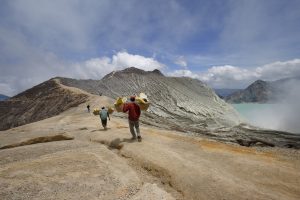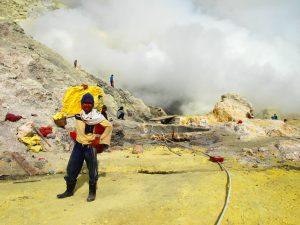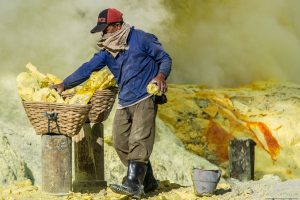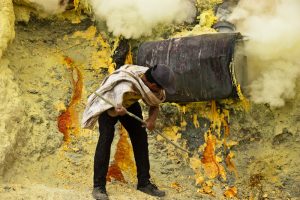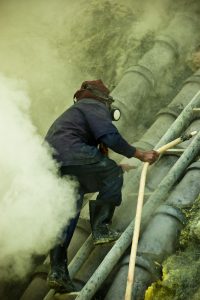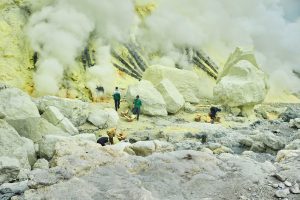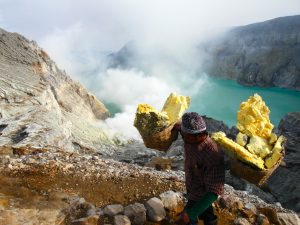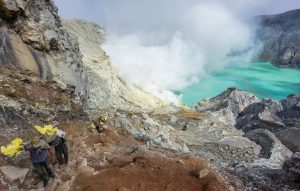5.5 How Minerals Form
The following criteria are required for mineral crystals to grow:
- The elements needed to make the mineral crystals must be present in sufficient abundance and appropriate proportions.
- The physical and chemical conditions must be favourable.
- There must be sufficient time for the atoms to become arranged into a lattice.
Physical and chemical conditions include factors such as temperature, pressure, amount of oxygen available, pH, and the presence of water. The presence of water makes it easier for ions to move to where they’re needed, and can lead to the formation of larger crystals over shorter time periods, as with the gypsum crystals at the beginning of this chapter. Time is one of the most important factors because it takes time for atoms to line themselves up into an orderly structure. If time is limited, the mineral grains may remain very small.
Most of the minerals that make up the rocks in the crust and mantle formed through the cooling and freezing of melted rock (magma). At the high temperatures that exist deep within Earth, some geological materials are liquid. As magma rises up through the crust, either by volcanic eruption or by more gradual processes, it cools and minerals crystallize. When cooling is rapid and many crystals form at once, only small mineral grains will form before the rock becomes solid. The resulting rock will be fine-grained (i.e., crystals less than 1 mm). When cooling is slow, or when few crystals are growing at a time, relatively large crystals will develop.
Minerals can also form in several other ways:
- Precipitation from a solution (e.g., from hot water flowing underground, or when evaporation concentrates ions in a lake or inland sea)
- Precipitation from a gas (e.g., from vents releasing volcanic gases)
- Metamorphism: solid minerals react with each other under high pressures and temperatures, and new minerals are formed.
- Weathering: minerals unstable at Earth’s surface are chemically altered by surface processes.
- Organic formation: organisms build shells (primarily of calcite or aragonite), and teeth and bones (primarily of apatite).
Sulphur Mining at Ijen Crater: Humans Intervene in Mineral Formation
The images below show the Ijen crater and the mining work. The images also show that most miners don’t have PPE (personal protective equipment) like heavy boots, gloves, or—most importantly—gas masks. Some make do by tying cloth in front of their faces, and others simply hold their breath for long intervals. Inhaling the gas damages soft tissues, but the issue the miners struggle with most immediately is that it also corrodes their teeth. Inexperienced visitors without proper equipment have become seriously ill after being exposed to the environment for only a few hours.
While the miners aren’t paid enough to afford proper protective attire, the job still pays more than many in the area. If they can make two trips per day, their pay for the day could be approximately what a minimum-wage earner gets in Canada for one hour of work.
Given how the sulphur forms at Kawah Ijen, would you expect large sulphur crystals to form, or smaller ones?
-
Larger, because there’s so much material available.
-
Smaller, because the crystals form quickly.
Answer: Smaller. The crystals form very rapidly when the sulphur precipitates from gas, and also rapidly when the molten sulphur freezes. The faster crystals form, the smaller they are. The large blocks of sulphur that are visible in the images are actually masses of very tiny crystals.

